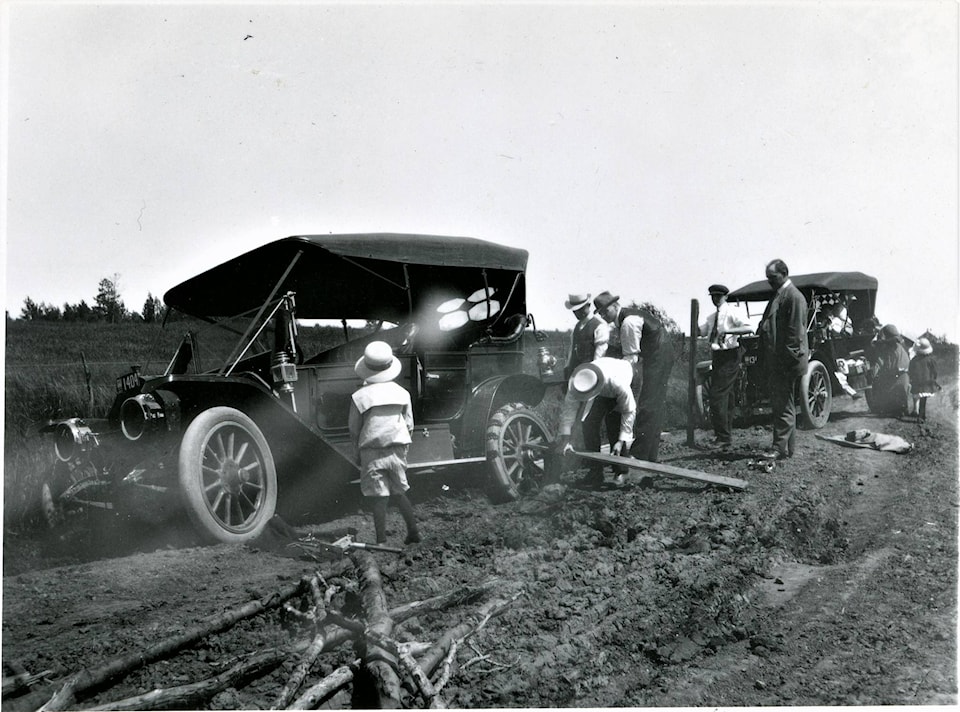This year (2021) marks the centennial of the Sylvan Lake Cemetery. Since the community is older than 100 years, it seems odd that there was not a local cemetery until 1921. Moreover, today, with the modern high-speed highways, it takes only 20 to 25 minutes to drive from Red Deer. In the early pioneer times, getting to and from Sylvan Lake was quite a challenge, taking as long as a full day.
There were many reasons for the challenging trips. The area around Sylvan Lake was heavily forested. To the east, there were extensive marshy flats with the large, but shallow, Burnt Lake in the middle. Trails were quite circuitous, as travellers attempted to find higher and dryer ground. Even then, the trails were often impassable, particularly in wet weather.
Two stories indicate how hard travel in the area could be. George Fitch of the Centreville district related how he once headed to Sylvan Lake to get his mail and some supplies. He had the lake in sight for three days as he slowly worked his way from one mud hole to another.
Another story is related in Annie L. Gaetz’s local history book, The Park Country. A man, with his wife and eight children, decided to homestead at Sylvan Lake. In the first summer, the family was only able to get a large garden of potatoes in. They spent the rest of the year eating very little else.
The man went to the Loiselle family’s sawmill on the shores of the Lake to get a job. Unfortunately, shortly thereafter he fell very ill. There was no doctor at Sylvan Lake at that time and the trails were too wet for a doctor to be summoned out from Red Deer.
Consequently, the man died. His body was put in the Loiselle’s ice house in hopes that the trails would dry up enough to allow wagons to transport the coffin, family and friends to Red Deer for a funeral service and burial. Finally, after a week’s delay, the sad little convoy began its trip.
However, the trails were still in a mess. At one point, the wagon carrying the coffin upset, sending the coffin and body into the mud. After some difficulty, things were righted and the slow trip resumed.
After two day’s travel, the group made it to the north bank of the River at Red Deer. The traffic bridge had been washed out in the spring flood and had not been replaced yet. With all the wet weather, the river was too treacherous to attempt to ford.
To compound the misery, it started to rain heavily again. It was too wet to start a fire. The travellers were forced to huddle on the wet ground under their wagons in hopes that they would be a little bit drier.
The next day, the villagers in Red Deer found out what was happening. They sent a boat over to pick up the body, coffin and accompanying travellers for transport to the south side. Finally, a burial was completed in the Red Deer Cemetery.
Nevertheless, people often still tried to head to Red Deer for funerals and burials. There were some local alternatives closer to Sylvan Lake. One was a small cemetery to the east at Burnt Lake. Another was to the west at Kuusamo.
Things improved in 1911-1912, when two rail lines were built across Western Central Alberta – the Alberta Central (CPR) and the Canadian Northern Western (CNR). That made travel to Red Deer much more reliable and faster – about two hours per trip. Also, in 1912, the Loiselle family donated a piece of land next to the new Our Lady of the Assumption Church for Roman Catholic burials.
During the deadly Spanish ‘flu epidemic of 1918-1919, some people were buried at Burnt Lake, but most were taken to Red Deer. However, the great tragedy helped persuade the Village of Sylvan Lake that a local municipal cemetery was needed. Hence, one was started in 1921 on the south side of the community. That is the cemetery that is being commemorated this year.
For more information on the ceremonies and on guided tours of the cemetery, contact the Sylvan Lake Town Office or visit the town website.
Red Deer historian Michael Dawe’s column appears Wednesdays.
